- Home
- Ramachandra Guha
India After Gandhi Page 12
India After Gandhi Read online
Page 12
Meanwhile, in March 1948 Sheikh Abdullah replaced Mehr Chand Mahajan as the prime minister of Jammu and Kashmir. Then, in the middle of May, when the snows had melted, the war recommenced. An infantry brigade advanced north and west from Uri. It took the town of Tithwal, butmet with sharp resistance en route to the key town of Muzaffarabad.54
On the otherside of an ever-shiftingline of control, Pakistan had sponsored a government of Azad (Free) Kashmir. They had also created an Azad Kashmir army, manned by men from these parts of the state, helped and guided by Pakistan army officers. These forces were skilful in their use of the terrain. In the late summerof 1948 they took the towns of Kargil and Dras, and threatened the capital of Ladakh, Leh, which is at an altitude of 11,000 feet. However, an Indian air force squadron was successful in bringing supplies to Leh. It was also the air force that brought relief to the town of Poonch, in the west, whose surroundings were under the control of the raiders.55
The two armies battled on through the later months of 1948. In November both Dras and Kargil were recaptured by the Indians, making Leh and Ladakh safe for the moment.In the same month the hills around Poonch were also cleared. However, the northern and western parts of Kashmir were still in the control of Pakistan. Some Indian commanders wanted to move on, and asked for the redeployment of three brigades from the plains. Their request was not granted. For one thing, winter was about to set in. For another, the offensive would have required not merely troop reinforcements, but also massive air support.56 Perhaps it was as well that the Indian Army halted its forward movement. For, as a scholar closely following the Kashmir question commented at the time,‘either it must be settled by partitionor India will have to walk into West Punjab. Amilitary decision can never be reached in Kashmir itself.’57
At the United Nations a Special Commission had been appointed for Kashmir. Its members made an extensive tour of the region, visiting Delhi, Karachi and Kashmir. In Srinagar they were entertained by Sheikh Abdullah at the famous Shalimar Gardens. Later, Abdullah had a long talk with one of the UN representatives, the Czech diplomat and scholar Josef Korbel. The prime minister dismissed both a plebiscite and independence, arguing that the ‘only solution’ was the partition of Kashmir. Otherwise, said Abdullah, ‘the fighting will continue; India and Pakistan will prolong the quarrel indefinitely, and our people’s suffering will go’.
In Srinagar Korbel went to hear Abdullah speak at a mosque. The audience of 4,000 listened ‘with rapt attention, their faith and loyalty quite obvious in their faces. Nor could we notice any police, so often used to induce such loyalty.’ The Commission then visited Pakistan, where they found that it would not consider any solution which gave the vale of Kashmir, with its Muslim majority, to India.58
IV
By March 1948 Sheikh Abdullah was the most important man in the Valley. Hari Singh was still the state’s ceremonial head – now called ‘sadr-i-riyasat’ – buthe had no real powers. The government of India completely shut him out of the UN deliberations. Their man, as they saw it, was Abdullah. Only he, it was felt, could ‘save’ Kashmir for the Union.
At this stage Abdullah himself was inclined to stress the ties between Kashmir and India. In May 1948 he organized a week-long ‘freedom’ celebration in Srinagar, to which he invited the leading lights of the Indian government. The events on the calendar included folk songs and poetry readings, the remembrance of martyrs and visits to refugee camps. The Kashmiri leader commended the ‘patriotic morale of our own people and the gallant fighting forces of the Indian Union’. ‘Our struggle’, said Abdullah, ‘is not merely the affair of the Kashmir people, it is the war of every sonanddaughter of India.’59
On the first anniversary of Indian independence Abdullah sent a message to the leading Madras weekly, Swatantra. The message sought to unite north and south, mountain and coast, and, above all, Kashmir and India. It deserves to be printed in full:
Through the pages of SWATANTRA I wish to send my message of fraternity to the people of the south. Farback in the annals of India the south and north met in the land of Kashmir. The great Shankaracharya came to Kashmir to spread his dynamic philosophy but here he was defeated in argument by a Panditani. This gave rise to the peculiar philosophy of Kashmir – Shaivism. A memorial to the great Shankaracharya in Kashmir stands prominent on the top of the Shankaracharya Hill in Srinagar. It is a temple containing the Murti of Shiva.
More recently it was given to a southerner to take the case of Kashmir to the United Nations and, as the whole of India knows, with the doggedness and tenacity that is sousualto the southerner, he defended Kashmir.
We in Kashmir expect that we shall continue to receive support and sympathy from the people of the south and that some day when we describe the extent of our country we shall use the phrase ‘from Kashmir to Cape Comorin’.60
The Madras journal, for its part, responded by printing alyrical paean to the union of Kashmir with India. ‘The blood of many a brave Tamilian, Andhra, Malayalee and Coorgi’, it said, ‘has soaked into the fertile soil of Kashmir and mixed with the blood ofthe Kashmiri patriots, cementing for ever the unity of the North and the South.’ Sheikh Abdullah’s Id perorations, noted the journal, were attentively heard by many Muslim soldiers from Kerala and Tamil Nadu. In Uri, sixty miles from Srinagar, there was a grave of a Christian soldier from Travancore, which had the Vedic swastika and a verse from the Quran inscribed on it. There could be ‘no more poignant and touching symbolof the essential oneness and unity of India’.61
Whether or not Abdullah was India’s man, he certainly was not Pakistan’s.In April 1948 he described that country as ‘an unscrupulous and savage enemy’.62 He dismissed Pakistan as a theocratic state and the Muslim League as ‘pro-prince’ rather than ‘pro-people’. In his view, ‘Indian and not Pakistani leaders . . . had all along stood for the rights of the States’ people’.63 When a diplomat in Delhi asked Abdullah what he thought of the option of independence, he answered that it would never work as Kashmir was too small and too poor. Besides, said the Sheikh, ‘Pakistan would swallow us up. They have tried it once. They would do it again. 64
Within Kashmir Abdullah gave top priority to the redistribution of land. Under the maharaja s regime, a few Hindus and fewer Muslims had very large holdings, with the bulk of the rural population serving as labourers or as tenants-at-will. In his first year in power Abdullah transferred 40,000 acres of surplus land to the landless. He also outlawed absentee ownership, increased the tenant s share from 25 per cent to 75 per cent of the crop and placed a moratorium on debt.His socialistic policies alarmed some elements in the government of India, especially as he did not pay compensation to the dispossessed landlords. But Abdullah saw this as crucial to progress in Kashmir. As he told a press conference in Delhi, if he was not allowed to implement agrarian reforms, he would not continue as prime minister of Jammu and Kashmir. Asked what he would doif reactionary elements got the upper hand in the central government, Abdullah answered: ‘Don’t think I will desert you, even if you desert me. I will resign and join those people in the Indian Union who will also fight for economic betterment of the poor.’65
At this press conference Abdullah also made some sneering remarks about Maharaja HariSingh. He pointed out that the maharaja had run away from Srinagar when it was in danger. In April 1949 Abdullah won a major victory when Hari Singh was replacedas sadr-i-riyasat by his eighteen-year-old son, Karan Singh. The next month Abdullah and three other National Conference men were chosen to represent Kashmir in the Constituent Assembly in Delhi, in a further affirmation of the state’s integration with India.66 That summer the Valley opened itself once more for tourists. As a sympathetic journalist putit, ‘every tourist who goes to Kashmir this summer will be rendering as vital a service to Kashmir – and to India – as a soldier fighting at the front’.67
In the autumn came a visitor more important than a million tourists – Jawaharlal Nehru. Nehru and Abdullah took aleisurely two-hour ride down Srinagar’s main th
oroughfare, the river Jhelum. As their barge rode on, commented the correspondent of Time magazine, ‘hundreds of shikaras (gondolas) milled around; their jampacked passengers wanted a good look, and they pelted Nehru withflowers’. Thousands watched the procession from the riverbanks, firing crackers from time to time. ‘Carefully coached schoolchildren’ shouted slogans in praise of Nehru and Abdullah. Seizing the chance, merchants had hung out their wares, alongside banners which advertised ‘best Persian and Kashmiri carpets’.
‘All the portents’, concluded Time, were that ‘India considered that the battle for Kashmir had been won – and that India intended to keep the prize.’68
V
The battle for Kashmir was, and is, not merely or even mostly a battle for territory. It is, as Josef Korbel put it half a century ago, an ‘uncompromising and perhaps uncompromisable struggle of two ways of life, two concepts of political organization, two scales of values, two spiritual attitudes’.69
On one side was the idea of India; on the other side, the idea of Pakistan. In the spring of 1948 the British journalist Kingsley Martin visited both countries to see how Kashmir looked from each. Indians, he found, were utterly convinced of the legality of the state s accession, and bitter in their condemnation of Pakistan’s help to the raiders. To them the religion of the Kashmiris was wholly irrelevant. The fact that Abdullah was the popular head of an emergency administration was ‘outstanding proof that India wasnot “Hindustan” and that there are Muslims who have voluntarily chosen to come to an India which, as Nehru emphasised, should be a democracy in which minorities can live safely and freely’.
When Martin crossed the border he found ‘how completely different the situation looks from the Pakistan angle’. Most people he met had friends or relatives who had died at the hands of Hindus and Sikhs. The dispute for the Pakistanis started with the rebellion in Poonch, which in India had been ‘largely and undeservedly forgotten’. In Karachi and Lahore the people were ‘completely sympathetic’ to the raiders from the Frontier who, in their eyes, were fighting ‘a holy war against the oppressors of Islam’.70 Martin’s conclusions were endorsed by the veteran Australian war correspondent Alan Moorehead. On a visit to Pakistan he too found that the Kashmir conflict was looked upon ‘as a holy Moslem war . . . Some of them, I have seen, talk wildly of going on to Delhi. Everywhere recruiting is going on and there is much excitement at the success of the Moslems.’71
The fragility of the Pakistani state and its ideology was personalized in the ambivalent identities of its main leaders. The governor general, M. A. Jinnah, was a Gujarati who had married a Parsi. The prime minister, Liaqat Ali Khan, was an aristocrat from the United Provinces who was married to aChristian. Neither was, in any sense of the term, apractising Muslim. The top civil servants of Pakistan were, like Jinnah and Liaqat, ‘mohajirs’, migrants whose ancestral homes lay on the Indian side of the border. The ruling class had no roots in what was now their state. This, one suspects, made them even more fervent in their desire to make Kashmir part of Pakistan.
However, the new Indian nation-state was not so robusteither. Its insecurity was manifest in its anointing, as a secular hero, of a Muslim officer who had died fighting in Kashmir. True, unlike the Pakistani army, the Indian army was drawn from men of all religions. Among its senior commanders were a Sikh, a Parsi and two Coorgs, these last from a south Indian hill community that likes to see itself as ‘not-Hindu’. Yet the commander who was to be venerated most was a Muslim. This man, Brigadier Usman, was educated in Allahabad and Sandhurst, and chose to stay with India at the time of Partition. It was claimed that Pakistan had dubbed hima ‘kaffir’, and that the Azad Kashmir government had puta price of Rs50,000 on his head, dead or alive.
In January–February 1948 Brigadier Usman and his men repulsed a fierce attack on Nowshera. In July of that year he died in action.An Indian journalist wroteof his death that ‘a precious life, of imagination and unswerving patriotism, has fallen a victim to communal fanaticism. Brigadier Usman’s brave example will be an abiding source of inspiration for Free India.’72 His death was publicly mourned by Congress leaders, from Jawaharlal Nehru downwards. The tributes that poured in praised not merely his bravery but also his character: he was, the Indian public was told, an army officer who was withal ‘a vegetarian,a non-smoker, and a teetotaller . His body was brought back from Kashmir to Delhi and buried with full military honours. His grave was placed next to that of Dr M. A. Ansari, a legendary Nationalist Muslim of the previous generation.73 One might say that Brigadier Usman was to the Indian army what Sheikh Abdullah was to Indian politics, the symbol of its putatively inclusive secularism, the affirmation of it being, if it was anything at all, the Other of atheologically dogmatic and insular Pakistan.
Both sides had invested men and money in the battle for Kashmir. More crucially, they had invested their respective ideologies of nationhood. The clash of these ideologies was captured in a debate on the future of Kashmir organized by a leading Bombay weekly, the Current. The protagonists were both young journalists – both Muslim, but one Indian,the other Pakistani. Both were asked to answer the question: which way would the Kashmiris vote if the United Nations did succeed in holdinga plebiscite?
Speaking on India s behalf was the gifted novelist and scriptwriter Khwaja Ahmad Abbas. One-fourth of Kashmir’s population, he said, were squarely behind Sheikh Abdullah and hisNational Conference – these were the politically conscious, ‘progressive’ elements. Another quarter were just as resolutely opposed to the Sheikh – these consisted of those ‘fully indoctrinated by the Pakistanideology’. Half the voters were undecided – they could go either way.These were attracted to the person of Abdullah, but also ‘susceptible to the cry of Islam in Danger’. When the day of reckoning came, Abbas thought that the memories of the raiders brutalities and the appeal of the progressive ideology of secularism would tilt the balance in favour of India. However, if India ‘wanted to make absolutely sure of a comfortable and convincing majority , then the maharaja and his dynasty had to be removed, and the Sheikh allowed to implement fully his economic programme.74
The next week Abbas was answered by a Karachi-based journalist named Wares Ishaq. He thought that the pull of religion would ensure a Pakistani victory in any plebiscite in Kashmir. Islam, he argued, was not just areligion, but aculture and a way of life. There was only one circumstance in which the Kashmiris would disregard the call of the faith – if India actually lived up to its claim of being a secular state. However, after the death of Mahatma Gandhi, the position of minorities was fraught with danger. In particular, wrote Ishaq, the lifting of the ban on the Hindu chauvinist body, the Rashtriya Swayamsevak Sangh, ‘has finally convinced Muslims all over India, and specially in Kashmir, that their position in India will always be that of a downtrodden minority’. Thus, when the crunch came, the bulk of the Kashmiris would vote to join ‘the Islamic comity of nations’ .75
VI
One might say of the conflict of 1947–8 that it had only losers. The indecision – with neither nation succeeding in acquiring the whole of the state – hurt bothsides then, and it hurts them now. Hence the prevalence and persistence of conspiracy theories. On the Indian side the finger is pointed at the British governor general, who dragged the case to the UN,and at the British general in command of the Indian army, who is believed to have stopped his troops from going into northern Kashmir.76 But the Pakistanis blame Mountbatten too; they think he conspired with Sir Cyril Radcliffe to gift the district of Gurdaspur to the Indians, so as to allow them a road into Kashmir.77 And they chastise their own government for not helping the raiders even more. As a senior civil servant lamented in 1998:
[T]he only chance of Pakistan obtaining Kashmir was by ablitzkrieg, combining the call of jihad, speed, and surprise, to present the enemy with a fait accompli before it could recover from the shock. The tribal invasion was well conceived as the only means to counter the Indian designs and compensate forPakistan’s military weakness . .
. The one single element which decided the issue against Pakistan was the faulty leadership of the tribal horde . . . This was the only mistake, and a decisive one at that, for which those who organized the invasion . . . should bear responsibility.78
This book will return to Kashmir at regular intervals. But let me end this investigation of the dispute’s origins with some prophetic statements made at the time.The quotes below come from observers speaking not in 1990 or 2000, but in the very early years of the conflict.79
Kashmir is the one great problem that may cause the downfall of India and Pakistan (Henry Grady, United States Ambassador to India, January 1948).
So long as the dispute over Kashmir continues it is a serious drain on the military, economic and, above all, on the spiritual strength of these two great countries (General A. G. L. McNaughton, UN mediator, February 1950).
So vital seems its possession for economic and political security to Pakistan that her whole foreign and defence policy has largely revolved around the Kashmir dispute . . . Far more than the Punjab massacres, which, though horrible, were short lived, it is the Kashmir dispute which haspoisoned every aspect of Indo-Pakistan relations (Richard Symonds, British social worker and author, 1950).
Kashmir is one situation you could never localize if it should flare up. It would influence the whole Muslim world. [It is] potentially the most dangerous in the world (Ralph Bunche, senior UN official, February 1953).

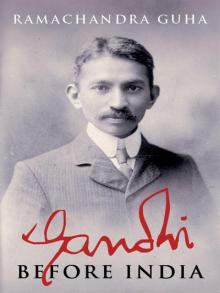 Gandhi Before India
Gandhi Before India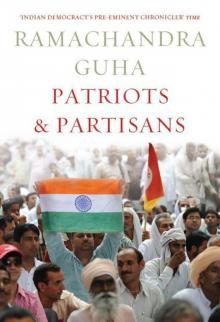 Patriots & Partisans
Patriots & Partisans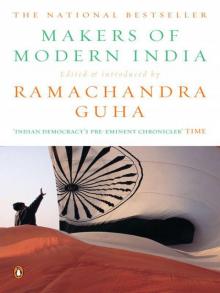 Makers of Modern India
Makers of Modern India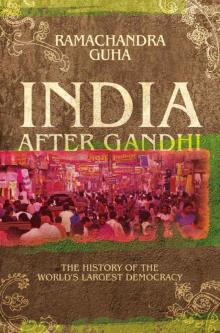 India After Gandhi: The History of the World's Largest Democracy
India After Gandhi: The History of the World's Largest Democracy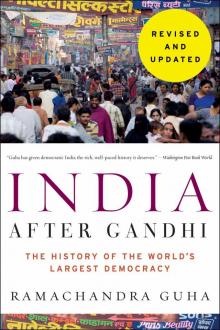 India After Gandhi Revised and Updated Edition
India After Gandhi Revised and Updated Edition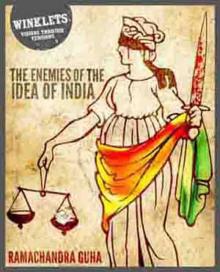 The Enemies of the Idea of India
The Enemies of the Idea of India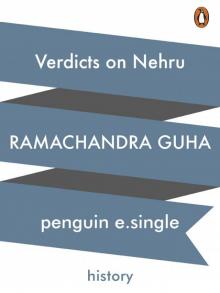 Verdicts on Nehru
Verdicts on Nehru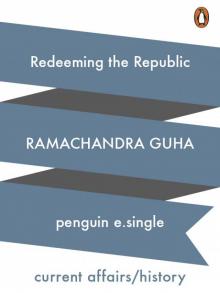 Redeeming the Republic
Redeeming the Republic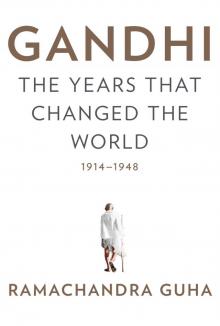 Gandhi
Gandhi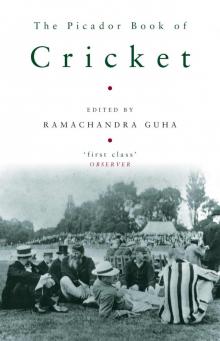 The Picador Book of Cricket
The Picador Book of Cricket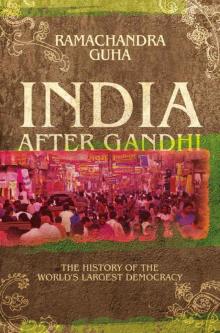 India After Gandhi
India After Gandhi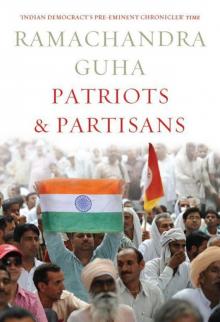 Patriots and Partisans: From Nehru to Hindutva and Beyond
Patriots and Partisans: From Nehru to Hindutva and Beyond